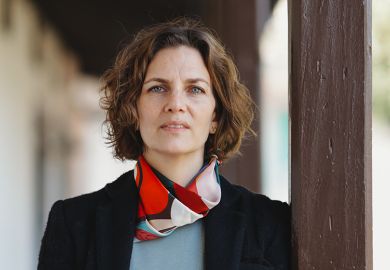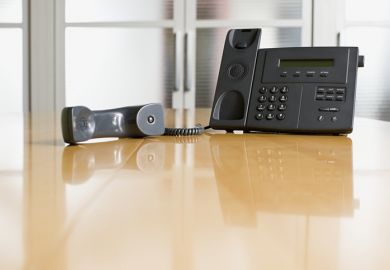The case for academic communication with the wider world is obvious. Most research is funded by the government and, by extension, the taxpayer. The rationale for that expenditure needs repeatedly to be made – and the best way of doing that is to showcase the expertise it underwrites.
Accordingly, the National Science Foundation has an Office of Legislative and Public Affairs that works diligently and effectively to communicate the successes of the research the agency invests in. Yet at the very core of STEM advances is fundamental research that does not always have a clear and obvious short-term benefit. This can place funding under scrutiny on Capitol Hill, particularly in times of burgeoning federal deficits and contentious debt-ceiling debates.
To protect themselves and their interests, academic institutions (both state and private) have ramped up their own efforts to communicate their research activities and the value they provide. Communications groups housed at all institutional levels, including university news bureaus, college communication offices and department communication writers, all work to place faculty and their research in the public eye through the media. Communication firms may even be engaged to facilitate such activities, in hope of accelerating access to high-profile media outlets.
Such attention, of course, also provides no-cost advertising to prospective students and heightens the perception of institutions to their stakeholders – not least alumni, who might be prevailed upon to make donations.
The problem is that most faculty are ill-equipped for the challenges of interacting with the media. Even those who are highly effective instructors in the classroom often perceive communicating with journalists – and, by extension, the public – as a bridge too far. This pushes some to devalue public communication as not worthy of their time and attention. Others readily make the leap – only to fall flat on their faces.
So what is the solution? As everyone knows, you can bring a horse to water, but you cannot make it drink. Simply facilitating interaction between faculty and the media is a formula for failure. It can also destroy relationships between communication professionals and their media contacts when faculty become no-shows or deliver insights that are incomprehensible to reporters.
Successful academic and scientific communication with the media must begin with faculty. It relies on their building relationships with reporters and editors, demonstrating themselves to be capable of reliably providing insights into topics of widespread interest, including explanations of what some would consider esoteric concepts and ideas. Unless such trust is built up, the likelihood of successful, ongoing media interactions is effectively zero.
But there also needs to be something in it for the faculty. If they see no reason for doing so, they will not engage.
As someone who does a lot of public communication, I can attest to the benefits of doing so. Every proposal submitted to the NSF must contain a Broader Impacts, which is used in the review process to measure the potential impact of a project. A thoughtful communication plan can help a proposal to stand out. And the visibility gained through media communication also creates new opportunities for collaboration with industry and even government. When organisations seek assistance, they might rely on google searches that catch media communications.
But this might not be enough to enthuse everyone. Communication efforts should also be accorded professional respect and reward. Institutions have tenure tracks, research tracks and teaching tracks. They should also create communication tracks. And even faculty who don’t adopt communication as their primary role should have it as a critical activity in their service responsibilities, rather than a secondary add-on with low priority.
Opinion and commentary writing might be particularly attractive for faculty interested in expanding their ideas’ reach. Communication offices can create “SWAT teams” of faculty willing to respond quickly in writing to issues in the news, and they can help to edit and place the articles they solicit. Faculty are pleased when their academic publications garner 50 or 100 reads. A well-placed opinion essay might attract 1,000 times this number, in the process garnering new opportunities with the media, including interactions with journalists or interviews on radio or television programmes.
But universities and colleges also need to provide training for those who are interested in developing such opportunities. The nuances of interacting with the reporters and editors are not taught in graduate school.
Start with the basics, such as a workshop on how to construct and deliver a 30-second elevator speech. And involve faculty in leading such workshops, because faculty are more likely to engage with their peers than with professional communication staff.
Such programmes could also be offered to graduate students. The promise of it could even be used as a recruiting tool; young people are highly likely to embrace such opportunities and might seed further media training programmes if they go on to academic posts at other institutions.
It is also important, however, for institutions to recognise that building relationships with the media takes time. Expecting immediate tangible results is unrealistic. Faculty should be encouraged to start with local media and work up towards national outlets on their own initiative.
Without such faculty involvement and buy-in, as well as support and recognition for their efforts, any money spent by administrations to grow their institutions’ media profiles will be squandered.
Sheldon H. Jacobson is a founder professor in computer science at the University of Illinois Urbana-Champaign. A data scientist, he applies his expertise in data-driven risk-based decision-making to evaluate and inform public policy and public health.
Register to continue
Why register?
- Registration is free and only takes a moment
- Once registered, you can read 3 articles a month
- Sign up for our newsletter
Subscribe
Or subscribe for unlimited access to:
- Unlimited access to news, views, insights & reviews
- Digital editions
- Digital access to THE’s university and college rankings analysis
Already registered or a current subscriber?









